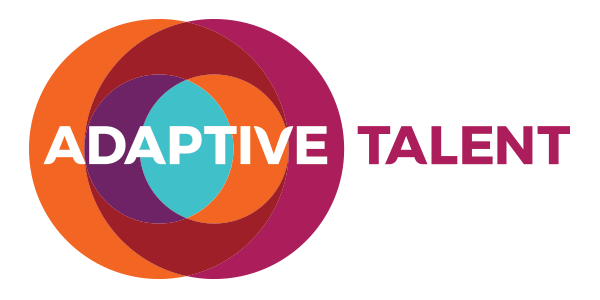There’s a saying that “culture will eat strategy for lunch”, meaning you can have the best idea in the world but if your culture isn’t tuned for execution you will not succeed. In this post I’m going to focus on how to establish a culture of execution by changing your leadership style and managing the core people processes. In my next post I’ll detail the core processes of strategy and operations. For more depth on this topic, I recommend a book called “Execution – The Discipline of Getting Things Done” by Larry Bossidy and Ram Charan (2002).
Many executives feel their job is setting “vision” and they should fully delegate the details of execution to subordinates. They fear being labelled a micromanager, someone who directs every decision without context or opportunity to contribute. Strong leaders know that it’s in the details of execution that agreements are established, resources allocated, people coached, and processes established to aim for maximum success. Your people come to expect this way of working because the organization makes it a core process and leaders model effective behaviours. It’s how you move from firefighting to ensuring growth, success, and satisfied employees and customers.
Because a culture is the sum of shared values, beliefs, and norms of behaviour the surest way to change your culture is to start behaving differently at an individual (i.e., leadership skills & style) and group level (processes and structure). Attitudes will always catch up to required behaviours.
For a leader, creating a culture of execution means managing yourself and your people differently:
- Know your people and your business: walk around, build trust, really understand the nuances of how work gets done and how people feel about issues, leaders, etc.
- Insist on realism: ask for the positive and negative of how employees feel about your organization and follow up on suggestions and comments
- Set clear goals and priorities: keep it simple and focus on the most important things and adapt
- Follow through: people pay attention to what the leader focuses on, so do what you said you would do
- Reward the doers: honour the changed or desirable behaviour and pay more to people who produce better results
- Expand people’s capabilities: coach them, create learning moments, ask questions to help spur thinking, support training, mentoring, etc.
At an organizational level, it means creating consistent processes around people, strategy, and operations that, over time, build up your bench of talent, differentiate your company’s offerings, and allow it to deliver against that promise. The most important process is the people process because without the right quality and supply of talent you simply cannot define or execute your strategies.
People Processes:
They should (1) provide a framework for identifying and developing the leadership talent needed to execute your short and longer term strategies; (2) fairly evaluate individuals and (3) fill the leadership pipeline so you have multiple candidates willing and able to do current and future jobs. This means your organization will probably need the following things:
- Values and/or leadership behaviours that people can use to shape their behaviour. This becomes the basis for evaluating “how” people achieve their objectives (i.e., are they a bull in a china shop?).
- Objectives – did the employee achieve her goals? It’s the “what” portion of the performance evaluation.
- A conversation and a document summarizing performance. You can keep this very simple by doing it quarterly as part of the normal 1:1 and then having the manager document the conversation via email to both the manager and employee (and HR person if you have one). Some organizations do a big once-a-year process; I’ve seen both work provided regular feedback is occurring throughout the year. My hunch is that regular shorter reviews are better if you’re trying to drive towards an execution culture and honestly I think it’s less work since you should be having 1:1s with your team anyway.
- A consistent way to review everyone relative to each other in similar functions and grades so you can have a “curve”. This allows you to see your top performers (performance and potential) and prioritize their retention and development accordingly.
- A very clear strategy so you can discern skills, knowledge and roles your organization will need in the future. For example, if you’re going to move into a retail operation you’re going to need to hire people with different skills sets performing new roles.
- A workforce plan that shows the breadth and depth of talent you will need for the upcoming FY with assumptions on the external environment, additions, terminations, and promotions. If you’re constantly running out of talent you need a workforce plan.
- A succession plan that sets you up for multiple candidates for each critical role. This is hard to do because your assumptions need to integrate the employee’s preferences, current and probable capability, and the expected organizational changes with the realities of achieving the current FY deliverables. The key is preparing multiple candidates with the core skills and experiences that every leader will need prior to moving to the next level of responsibility and then constantly reviewing and iterating on your plan as you would with any other strategic goal. Figuring out the successor to Steve Jobs at Apple is a real life example of the importance of developing and retaining multiple candidates.
You do not need a gigantic process or staff to do these things. Keep it simple, important, and demand regular progress. The CEO’s level of passion, ability to mentor, and attention to detail around these goals will have a huge impact on whether this becomes just another exercise or truly becomes central to the culture.
In my next post I’m going to talk about the core processes of strategy and operations and their impact on execution.
I hope this has been helpful and of course the Adaptive Talent team would welcome the opportunity to help you and your team improve your execution agility and adaptability via our culture and organizational development consulting, meeting facilitation, communications and coaching / mentoring training, total rewards consulting, leadership coaching and development programs and retained search to help you land high impact talent.

